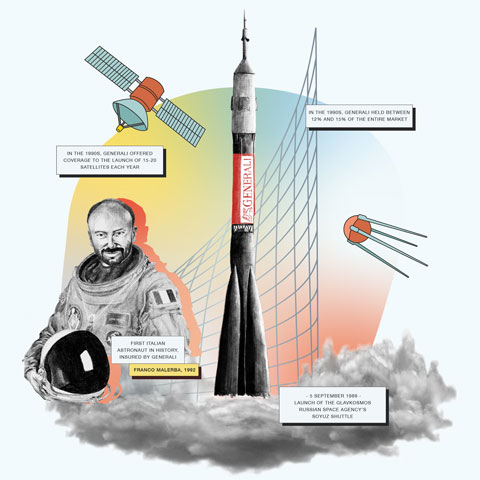A problem satellite in space can cause a disruption in a bar in Florida
FACEBOOK POST – John Doe
The story I want to tell you took place exactly 30 years ago.
It’s a story about boxing, bars, and satellites in orbit in space. If you’re wondering how these three elements can be connected, just keep reading.
In 1990, I was ten years old, and my father gave me the best gift I could wish for. For the first time, he took me with him to Boe’s bar to watch a boxing match.
It was a world heavyweight championship match but I don’t remember who the contenders were.
We were living in Florida at that time, in Boca Raton, a place made up of second homes by the sea on the south coast, looking towards Cuba.
Bars were off limits to me: my mum had vetoed them. “You’re not taking my son into those dens of iniquity,” she always repeated to my father.
But that day was my tenth birthday – that’s why I remember it so well – and there was boxing.
My father promised my mother that we would sit away from the crowd and that if things heated up, we would leave; but neither he nor she could have predicted what would happen 1000 kilometres above our heads.
It was the first time I’d been into that bar and being there with my father I experienced a joy and pride that I’d never felt before.
“This is my son, he’s ten today,” Dad kept telling everyone present. Someone asked me who I was cheering for, everyone wished me happy birthday. Boe, the old owner, offered me a soft drink.
Then the match began. I remember very little, because I was too distracted by all those people shouting and drinking giant and frothy beers.
Suddenly there was a roar, as if something had gone wrong, and everyone started shouting, pointing at the screen. I turned to look, and it was completely black.
I thought the power had gone out, but the lightbulbs were still on. I thought the TV had broken, but it wasn’t that either: the signal had simply cut out, and when the images reappeared a few minutes later, the match was over. Knock out.
People lost it. Boe tried to keep the customers calm, but as the first beer flew above our heads, crashing into the counter, my father grabbed me forcefully and dragged me out of the place, my feet never touching the ground. As we got into the car, I saw everything inside the bar flying from one side to the other like in a centrifuge.
Mum banned my Dad from taking me to the pub for the next ten years, and when I started going with my friends, I kept it a secret from her.
But what happened that day remained etched in my memory, and now that I work in the insurance field, I know exactly what it was.
The satellite broadcasting that match live across the United States had lost the signal for technical reasons.
The customers who had paid 15 dollars to see the match had lost their tempers and destroyed the bar.
But the satellite transmission had insurance coverage from an Italian insurance company, Generali, which compensated Boe for all the damages caused by the customers’ anger over that dancing satellite.
I have always been fascinated by the idea that an insurance company embarks on a groundbreaking adventure like space, the last frontier to conquer, but thanks to a strange series of rebounds it finds itself having to pay for the broken chairs and windows of a bar in Boca Raton.
Today, at the age of 40, I am telling you this story because I have finally got the answer to a question I’ve been asking myself since then.
I have always wondered what became of that satellite that has been revolving for years, alone in its space orbit, since that failure. It would have worked for a while longer, but then what? Once definitively out of commission, what would its fate have been?
Yesterday I found out: when they end their useful life cycle, which is around 12 to 14 years, satellites end up in a sort of satellite cemetery, circling the Earth in what is called a “graveyard orbit”, where they continue to revolve, endlessly.
I feel a kind of affection for that satellite which, even now, is still out there in the darkness of deep space, revolving, alone, unable even to play a few tricks on a rowdy group watching a boxing match in a bar.
HISTORY

Generali has proved itself to be particularly sensitive to the issue of “overcoming limits”, collaborating in several explorations to the confines of the known Earth. Around the mid-1920s, Generali was already responsible for the first aeronautical covers, and in the early 1930s a fully-fledged aeronautical branch was now operative.
In 1964, it provided the insurance cover to the “San Marco” project. The programme, conceived by Luigi Broglio (considered to be the father of Italian astronautics), allowed Italy to be among the first nations in the world to send its own satellite into orbit.
It was, however, in 1977 that Generali fully entered the field of space insurance, on the occasion of the Cape Canaveral launch of Sirio, an Italian telecommunications satellite that experimented with live television broadcasting.
Within a few years of that event, Generali became one of the leading companies in the sector, thanks to the high level technical training of its staff, also playing a central role in promoting projects of considerable scientific value.
At the end of 1981, Generali was the first in the world to be equipped with a computerised database necessary for the insurance assessment of future space programmes.
